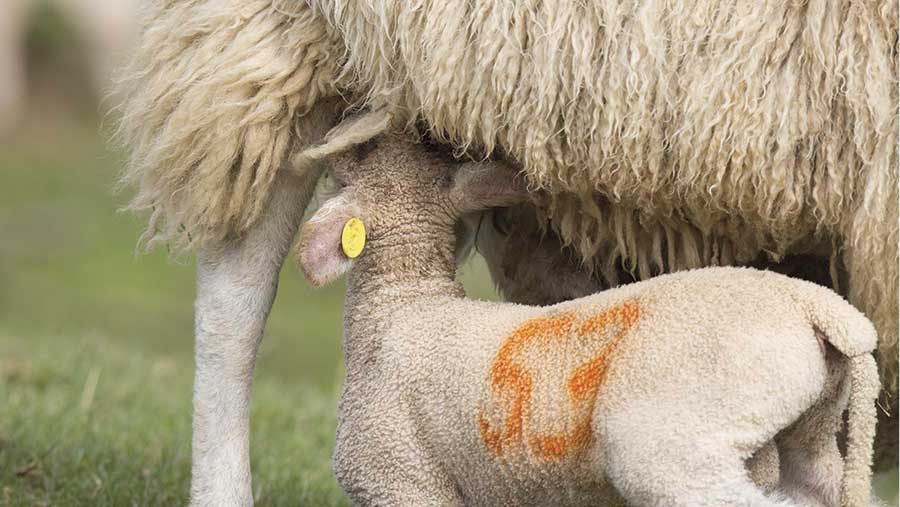Tips on tackling mastitis in sheep
 © Tim Scrivener
© Tim Scrivener We look at a range of advice from vets on how to keep mastitis in sheep at bay, including tips on shelter, health and nutrition.
Causes of mastitis this spring
Ewes came under pressure in the early part of the year as cold winds caused chaffing on teat skin, triggering mastitis.
The poor weather also led to lower grass growth and less time spent grazing.
See also: How to prevent mastitis at weaning
This had an impact on milk production, resulting in lower nutrition in lambs, which try to compensate by oversuckling, another trigger for mastitis.
Cold weather also means there is a higher energy requirement in lambs as they try to keep warm.
Shelter provision
Vet Kristy Syer, at Fenton Vets in Haverfordwest advises against crutching ewes too severely.
She recommends a focus on shelter provision and says farmers should also consider which stock groups graze more exposed fields.
Feeding
Independent sheep specialist Kate Phillips recommends focusing on feeding and nutrition.
Farmers might not be prepared to feed the whole flock for longer in a cold spring, but could consider separating the yearlings into a different field and feeding them differently.
Weigh the cost of feeding against that of losing an animal to mastitis after the first lambing.
How to inspect udders for lumps
- Turn ewes over, don’t just look from behind
- Feel both sides of udders. In ewes not feeding lambs, the bag will be soft. Feel for areas of hardening, these may be obvious lumps or more general areas of firmer tissue
- The udder should be even on both sides
- Check teats too – make sure no lumps are palpable in the teat canal and there is no sign of damage to the teat end
Cut out concentrates when there is more than 4cm of grass, but don’t rely on the calendar for this, look at grass availability before omitting feed.
The energy requirement post-lambing is very high.
A 70kg ewe carrying twins will require 18MJ of energy but 32MJ post-lambing, a differential of more than 1kg of concentrates if grass is in short supply.
Ewe nutrition
Farmers should look at ewe nutrition before and after lambing, paying particular attention to ewe body condition, energy, and protein in the diet, because these drive milk production.
Making sure ewes lamb down in good body condition is important for mastitis prevention.
Mrs Phillips recommends lambing at condition score 2.5-3.0.
Lambing at 2.0, means ewes have limited body reserves to mobilise for milk production and will be more likely to get mastitis.
Managing orf
Caroline Rank, a vet with the Belmont Veterinary Centre in Hereford, has seen a higher-than-usual incidence of mastitis this year and recommends checking for orf and considering a cull.
If orf is present in the flock, damage caused to the ewes’ teats allows mastitis pathogens to gain entry.
Manage orf by clearing or not grazing rough pastures with ewes or lambs.
Use of salt licks can help, or discuss with your vet if vaccination is a suitable option for your farm.
Lambing percentage
Consider the lambing percentage of ewe lambs and yearlings.
If you are getting more multiples than you can cope with, try flushing differently or change your policy for rearing lambs.
Culling
By the time a case of mastitis is spotted, it has most likely caused quite serious damage, so culling is recommended.
Ewes are likely to have damage to the udder tissue, which will decrease udder function the following year.
